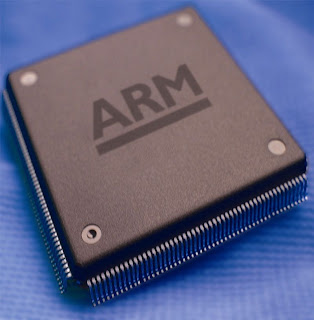ARM Processors to Increase Smartphone Efficiency
A7 chips set to appear in both entry-level and high-end smartphones in 2013
Smartphones will no longer have to compromise between performance and battery life. ARM's A7 microprocessor uses the company's most energy efficient chip design to date, and will bring improved performance to entry-level smart phones.
Used alongside the forthcoming Cortex A15 in the 'big.Little' power-saving architecture, the A7 will also feature in high-end smart phones.
By combining two types of core on the same chip, and assigning different applications to each depending on their requirements, ARM said it can resolve the conflict between the need for both higher performance and longer battery life.
big.Little can reduce power consumption by 70 percent, according to ARM. Gaming and video playback is performed on the more powerful A15 chip, while tasks that require less power, such as making a phone call, are assigned to the A7 to conserve power.
The A7 will be manufactured using a 28-nanometre process; combined with architectural improvements, this will make the processor one-fifth the size, with one-fifth the power consumption, compared with today's Cortex AS processor. But the A7 will still give a 50 percent performance boost compared to the A8. according to the company.
The big.Little architecture will have a die size of less than 0.5 square millimeters and draw less than 500 mill watts of power, said Nandan Nayampally, director of marketing for the ARM processor division. Furthermore, the A7 and the A15 will have identical feature sets, so software applications will run on both cores without modification.
ARM's designs are licensed and manufactured by companies such as Texas Instruments, Broadcom and Freescale. The chip makers are expected to produce the first A7 parts next year, and smartphone makers will begin fit ting them to devices soon after that. It may take chip makers a little longer to implement the combined A7-A15 design, but ARM said this could also appear in smartphones by 2013.




 TechQuark is a mobile-friendly website. Simply bookmark
TechQuark is a mobile-friendly website. Simply bookmark 